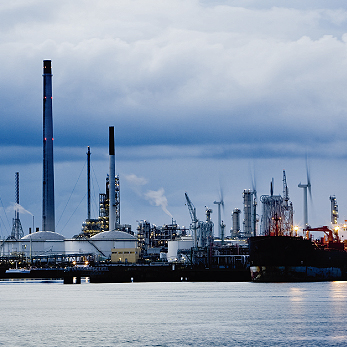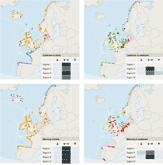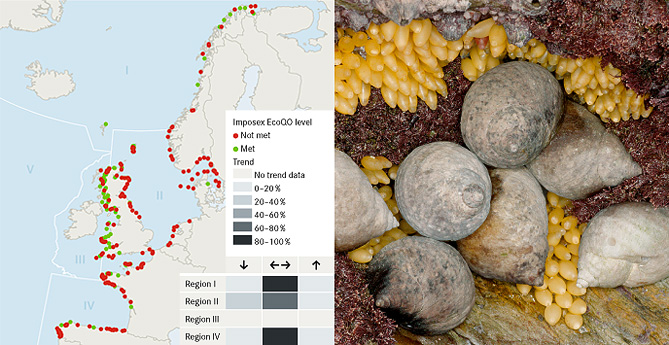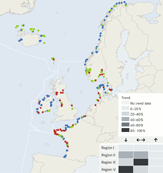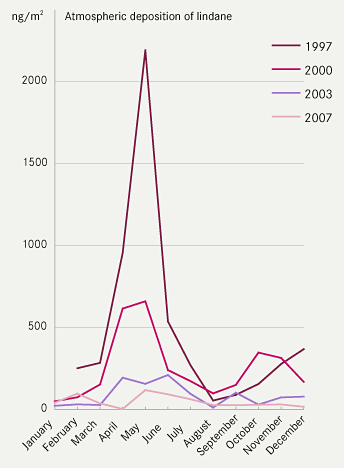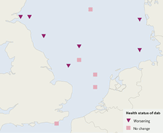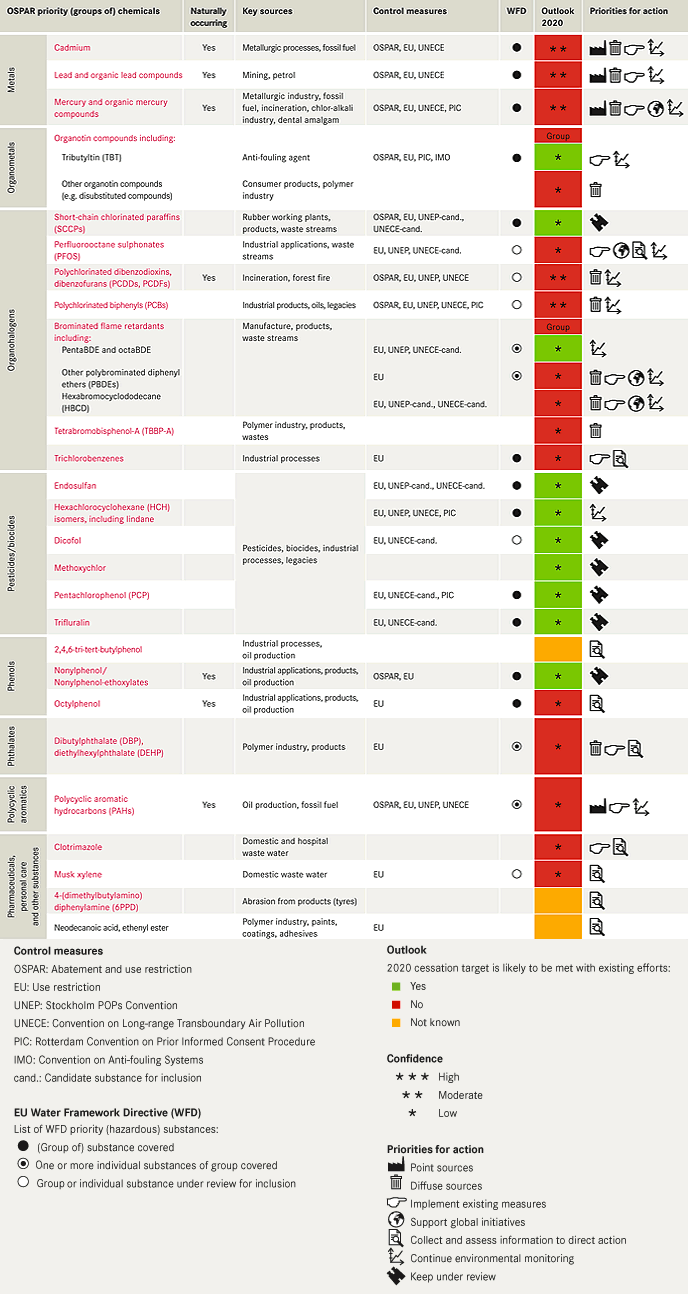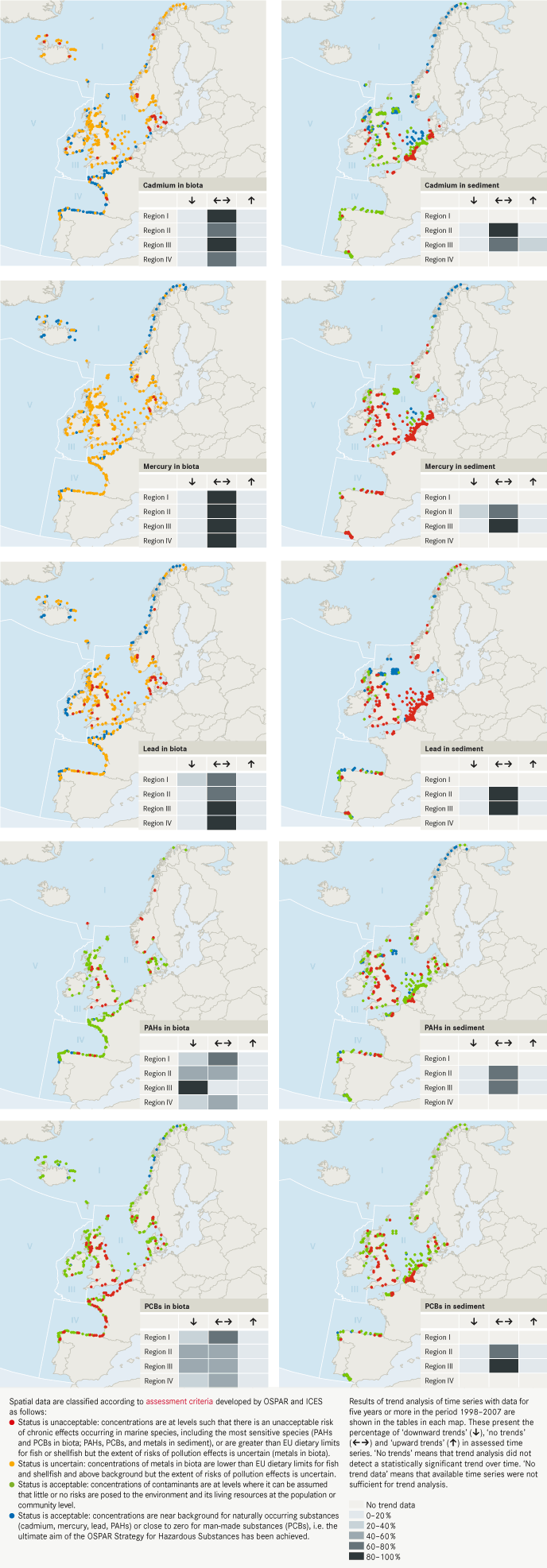Contamination from POPs requires global action
Long-range transport through air, water and biological pathways carries persistent organic pollutants (POPs), including perfluorooctane sulphonates (PFOS), SCCPs, and brominated flame retardants, to areas far from their sources. In the northern hemisphere, the prevailing air currents are towards the Arctic where many of these highly persistent contaminants end up. The tendency for these pollutants to bioaccumulate results in high concentrations in animals at or near the top of the food chain. This concerns predators such as polar bears, whales, seals and birds.
Monitoring shows that these pollutants are widely distributed through the marine environment, even in areas remote from emission sources. PFOS and related substances for example are extremely persistent and have long-term toxic effects on marine life and humans. They have been found in all environmental compartments in Regions I and II, both at polluted sites and far from direct sources.
Owing to this long-range transport, efforts to reduce emissions of POPs must occur at the global level. Recently octaBDE, pentaBDE, PFOS and lindane have been included under the UNEP Stockholm POPs Convention for global elimination. This should be followed by inclusion of SCCPs, endosulfan and HBCD. Even with a global ban coming into effect soon, these substances are so persistent that exposure and bioaccumulation will continue for many years.
Efforts on biological effects must continue
The presence of hazardous substances leads to a range of responses within marine organisms, such as the induction of specific enzymes, changes in tissue pathology and death. Contaminant-specific techniques have been developed which allow these responses to be measured, providing a means of linking the presence of contaminants and impacts. The most successful technique is the measurement of TBT-specific effects (imposex) in gastropods. Other techniques are under development to reflect the responses to multiple contaminants. For example, data on fish diseases are collected under the CEMP and combined in an index as a potential tool for assessing fish population health and to evaluate the impact of human-induced stresses on wild fish. While measurements in Region II show a worsening of fish health from the 1990s to the 2000s suggesting an overall decline in environmental conditions, this cannot be linked with observations of chemical contamination and causes still need to be investigated Figure 5.4. Recent studies of individual fish diseases have now been able to link a general decline in liver tumours in fish in the Netherlands’ waters of the North Sea since the late 1980s with a decrease in exposure to organic pollutants, such as genotoxic and carcinogenic PAHs.
It is not yet possible in most cases to link chemical monitoring with observations of effects in species in such a way that conclusions can be drawn about the impact of contaminants on the functioning of ecosystems at a regional level. OSPAR countries have made progress in standardising reference methods for monitoring biological indicators, but have not yet implemented a fully coordinated biological effects monitoring programme. This will be needed to support the regional assessment of hazardous substances. Efforts on biological effects monitoring and assessment should therefore continue and be enhanced, also in relation to combined effects on ecosystem function, for which chemical analysis is not suitable.
Understanding of endocrine disrupting effects must improve
Since the QSR 2000, there has been little improvement in knowledge about concentrations of potentially endocrine disrupting chemicals released to the marine environment. Recent work has highlighted the potential for synthetic substances to disrupt immune systems and chemical communication between organisms. Although research on these topics is expanding rapidly, the best known aspect of endocrine disruption is still the effects on sex hormone systems and reproduction in fish.
OSPAR has developed guidelines for monitoring endocrine disrupting effects in fish. These are not a formal part of the OSPAR monitoring programme, but allow surveys, for example, of feminisation of male fish through measurement of intersex and vitellogenesis (the process of yolk formation specific to the female germ cell). Endocrine disrupting effects in fish occur in many areas, although their extent, severity, and consequences are not clear. Male flounder from estuaries in Belgium, Denmark, France, Germany, the Netherlands and the UK have elevated concentrations of plasma vitellogenin (linked to reduced reproductive success in male fish), as have cod from Norwegian inshore waters, and dab from offshore waters of the North Sea. There is some limited evidence to suggest that concentrations of plasma vitellogenin in male flounder from some UK estuaries may be falling.
Emerging problems from substitute chemicals
In many cases, when a hazardous substance is phased out, its uses are filled by other chemicals. This often benefits the environment, but can lead to new and unexpected problems if properties of the replacement chemicals are not well understood. Medium-chain chlorinated paraffins (MCCPs) for example are increasingly used as substitutes for SCCPs following EU restrictions in 2002. They are less harmful than SCCPs, but are still of concern due to their persistence and accumulation in the marine environment. There is a clear need to keep environmental levels of chemicals used as substitutes under review as these could also pose environmental risks.
Market conditions affect progress towards OSPAR’s objectives
Market conditions, production methods and volumes, and technological developments have brought structural changes in some major land-based and offshore industries. Some industries have ceased, while others have emerged, and many manufacturing industries have relocated to other parts of the world, for example, Asia. Rapidly developing economies and their associated industrial development and energy demand outside the OSPAR area are causing increasing pressure on the North-East Atlantic. This is principally through long-range atmospheric transport of contaminants such as mercury and PAHs. In addition, some imported goods contain hazardous substances that can reach the sea as the product is used and following its disposal. Typical examples are lindane, nonylphenol and brominated flame retardants.
Global action is required to control the input of such substances to the marine environment. Steady growth in the use of manufactured goods and the resulting waste streams is a growing source of potential pollution that needs tackling.
Continue to "What happens next?"


